Acanthuroidei
This group has a very flattened, rounded body shape. There's not many other exciting unifying features, but each family has its own quirks.
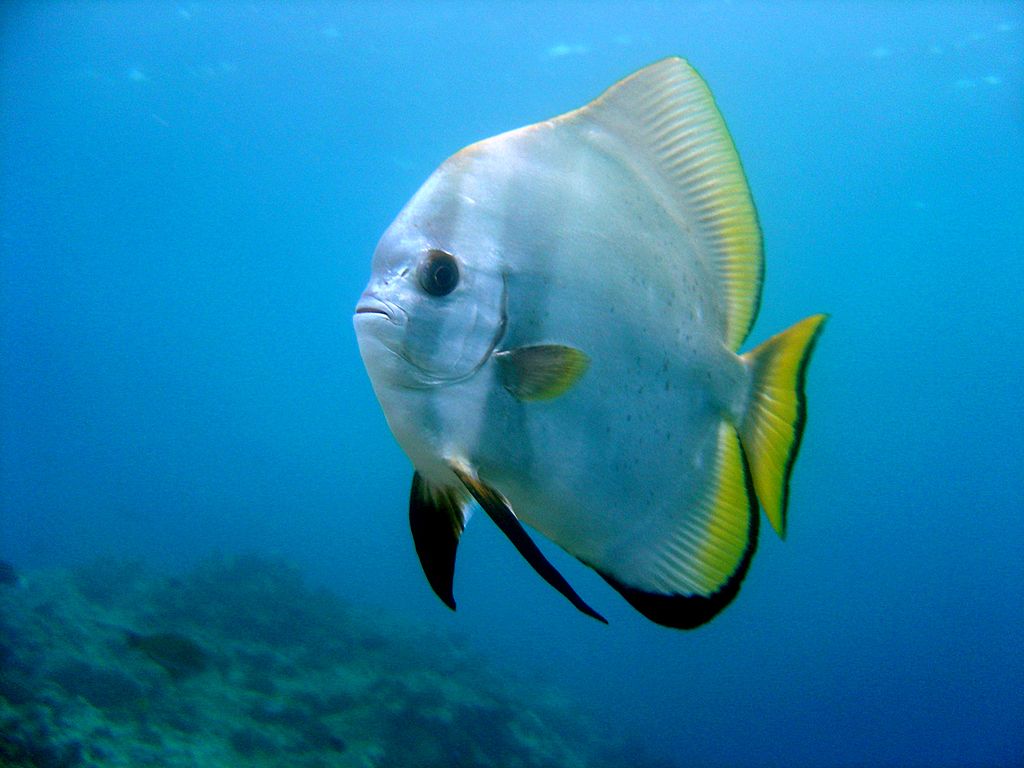
"By David Burdick [Public domain], via Wikimedia Commons
Ephippidae: Spadefishes
These cute l'il fellers have a very rounded shape when viewed from the side, but a compressed body. Maybe people used to dry them and use them as spades? Who knows? They also have cute tiny mouths. The genus Platax is known as the "batfishes," not to be confused with the family Ogcocephalidae. They're considered an important species in the Great Barrier Reef because they eat certain types of algae that other fish won't. You go, Platax!
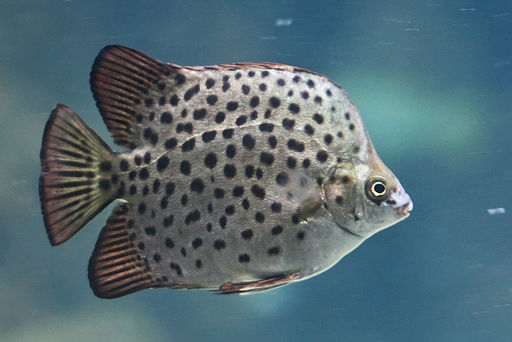
"By Fokko Toelstede (Own work) [CC BY-SA 3.0], via Wikimedia Commons
Scatophagidae: Scats
Oooooh, this is a fun one! "Nate," you're probably thinking, "why does it have the term 'scat' in its name?" Well funny you should ask, it's because these fishes have been known to eat human poop/poo/feces/fecal matter/turds/floaters...gross. Some of them reproduce in freshwater, which I guess is a big accomplishment when everyone else in your family reproduces in saltwater. I bet that's the species that gets talked about the most at reunions. When they're not busy eating human poo. But don't point and laugh, because the dorsal spines also contain a venom that can make people dizzy. And maybe pass out and fall into the piles of poo on the buffet table.
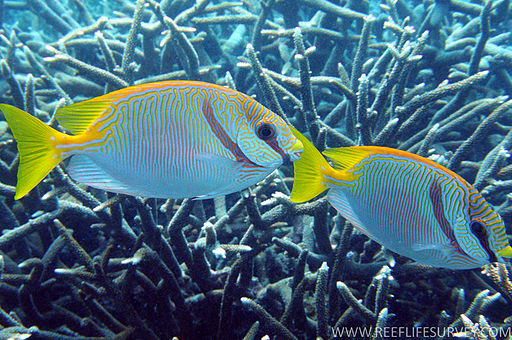
"By T. Cooper [CC BY 3.0], via Wikimedia Commons
Siganidae: Rabbitfishes
These fishes get their name from their rabbit-like mouths, which contain strange bicuspid teeth. I'm not completely sure, I can't find any pictures. Interestingly, the pelvic fins consist of two spiny rays with three soft rays in between. The fin spines contain venom, so watch out!

"www.MarineCreations.com
Luvaridae: Louvar
There is one species, Luvarus imperialis. It is recognized by its pinkish color and bulging forehead. The dorsal fin in juveniles starts out far forward, and as the fish grows to adulthood, the anterior spines are lost. This fish is found in open ocean, as opposed to the other members of Acanthuroidei, who are found closer to reefs and coastal waters. It produces loads of eggs (over 45 million per fish).
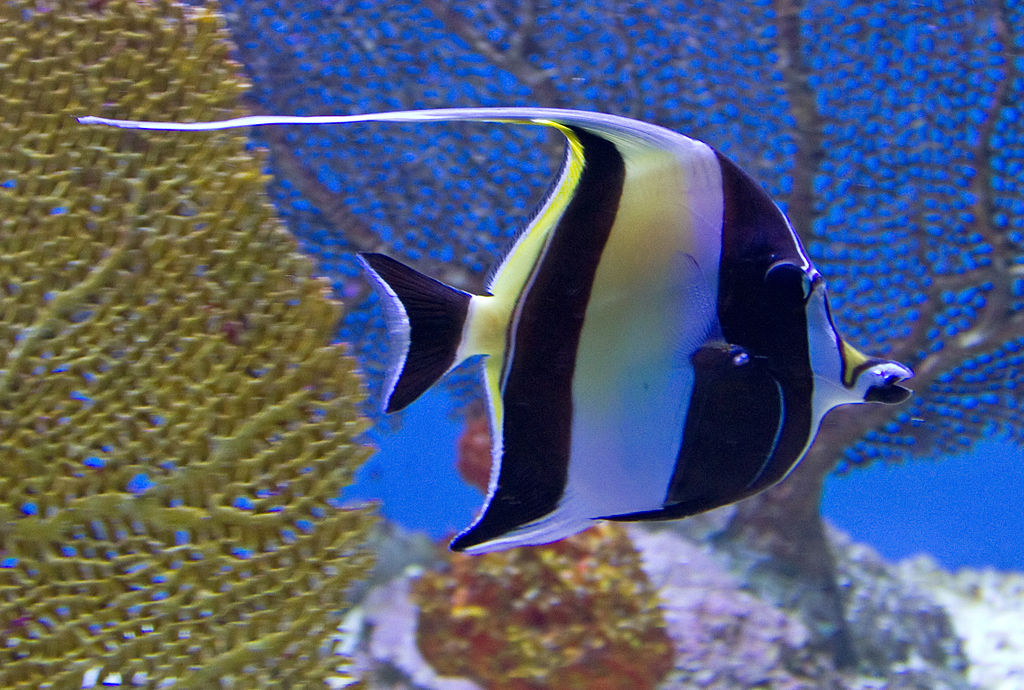
"By Tony Hisgett from Birmingham, UK (Fish 3 Uploaded by tm) [CC BY 2.0], via Wikimedia Commons
Zanclidae: Moorish Idols
There is one species, Zanclus cornutus. Adults have a strange horn-like "protuberance," while the young have a spine at the corner of the mouth. Though it looks similar to butterfly fishes (Chaetodontidae), it is not. Got it? They are very recognizable by their vertical white, yellow, and black stripes, along with a trailing wispy dorsal fin.
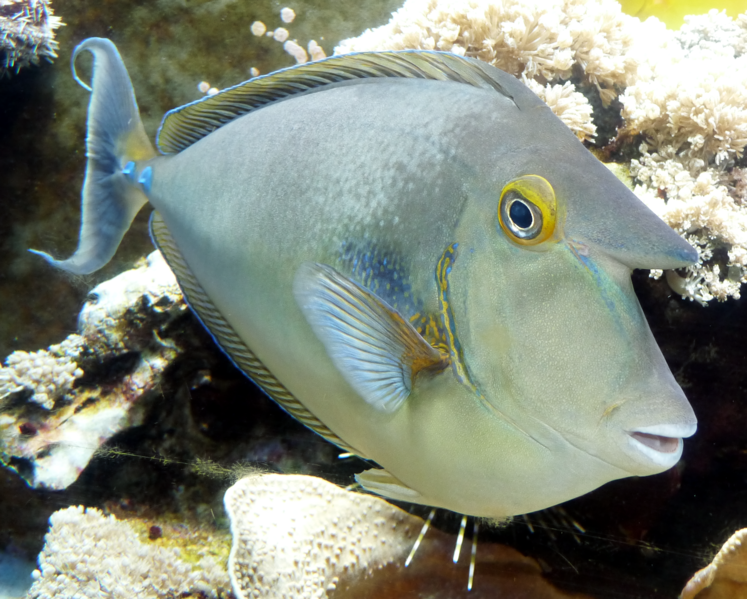
"By J. J. Hornung (Own work) [CC BY-SA 3.0], via Wikimedia Commons
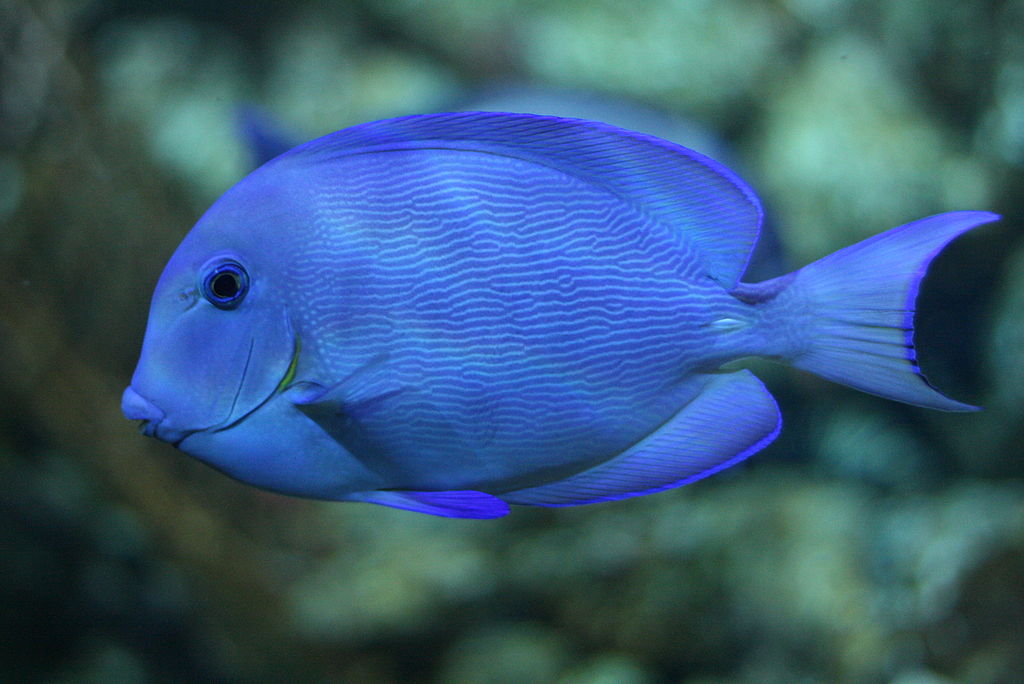
"By Sylfred1977 (Own work) [GFDL or CC BY-SA 3.0], via Wikimedia Commons
Acanthuridae: Surgeonfishes
If you look closely at the caudal peduncle (part that connects the tail to the body), you'll notice it has one or more spines on each side of the body. These spines can be erected to slash unwise predators or foolish divers that get too close. The unicornfishes, genus Naso, develop a protuberance on the front of the head, from which their name derives.